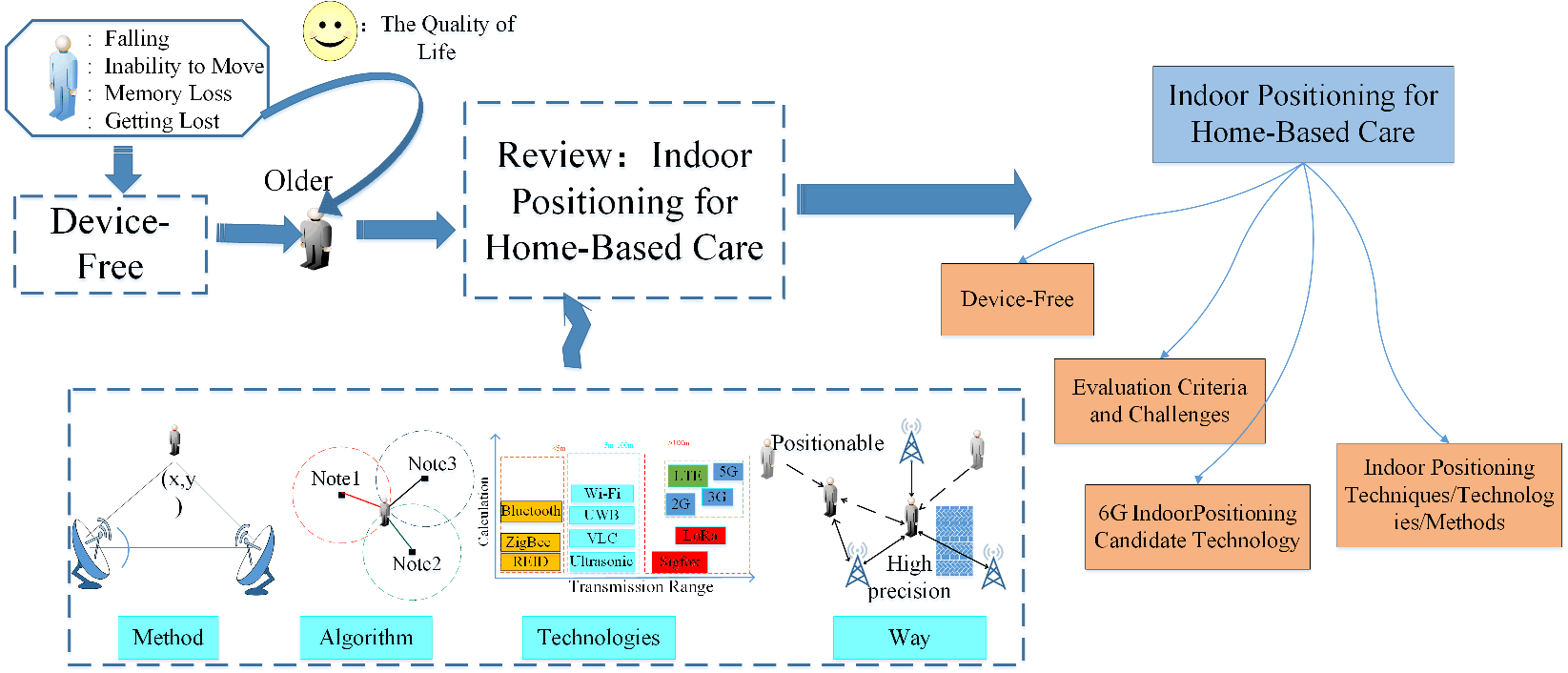 Open Access
Open Access
REVIEW
A Review of Device-Free Indoor Positioning for Home-Based Care of the Aged: Techniques and Technologies
1 College of Electronic and Information Engineering, Shandong University of Science and Technology, Qingdao, 266590, China
2 School of Computer Science and Technology, Henan Polytechnic University, Jiaozuo, 454000, China
* Corresponding Authors: Geng Chen. Email: ; Shuihua Wang. Email:
(This article belongs to the Special Issue: Computer Modeling of Artificial Intelligence and Medical Imaging)
Computer Modeling in Engineering & Sciences 2023, 135(3), 1901-1940. https://doi.org/10.32604/cmes.2023.024901
Received 12 June 2022; Accepted 18 August 2022; Issue published 23 November 2022
Abstract
With the development of urbanization, the problem of neurological diseases brought about by population aging has gradually become a social problem of worldwide concern. Aging leads to gradual degeneration of the central nervous system, shrinkage of brain tissue, and decline in physical function in many elderlies, making them susceptible to neurological diseases such as Alzheimer’s disease (AD), stroke, Parkinson’s and major depressive disorder (MDD). Due to the influence of these neurological diseases, the elderly have troubles such as memory loss, inability to move, falling, and getting lost, which seriously affect their quality of life. Tracking and positioning of elderly with neurological diseases and keeping track of their location in real-time are necessary and crucial in order to detect and treat dangerous and unexpected situations in time. Considering that the elderly with neurological diseases forget to wear a positioning device or have mobility problems due to carrying a positioning device, device-free positioning as a passive positioning technology that detects device-free individuals is more suitable than traditional active positioning for the home-based care of the elderly with neurological diseases. This paper provides an extensive and in-depth survey of device-free indoor positioning technology for home-based care and an in-depth analysis of the main features of current positioning systems, as well as the techniques, technologies and methods they employ, from the perspective of the needs of the elderly with neurological conditions. Moreover, evaluation criteria and possible solutions of positioning techniques for the home-based care of the elderly with neurological conditions are proposed. Finally, the opportunities and challenges for the development of indoor positioning technology in 6G mobile networks for home-based care of the elderly with neurological diseases are discussed. This review has provided comprehensive and effective tracking and positioning techniques, technologies and methods for the elderly, by which we can obtain the location information of the elderly in real-time and make home-based care more comfortable and safer for the elderly with neurological diseases.Graphic Abstract

Keywords
Cite This Article
 Copyright © 2023 The Author(s). Published by Tech Science Press.
Copyright © 2023 The Author(s). Published by Tech Science Press.This work is licensed under a Creative Commons Attribution 4.0 International License , which permits unrestricted use, distribution, and reproduction in any medium, provided the original work is properly cited.


 Submit a Paper
Submit a Paper Propose a Special lssue
Propose a Special lssue View Full Text
View Full Text Download PDF
Download PDF Downloads
Downloads
 Citation Tools
Citation Tools